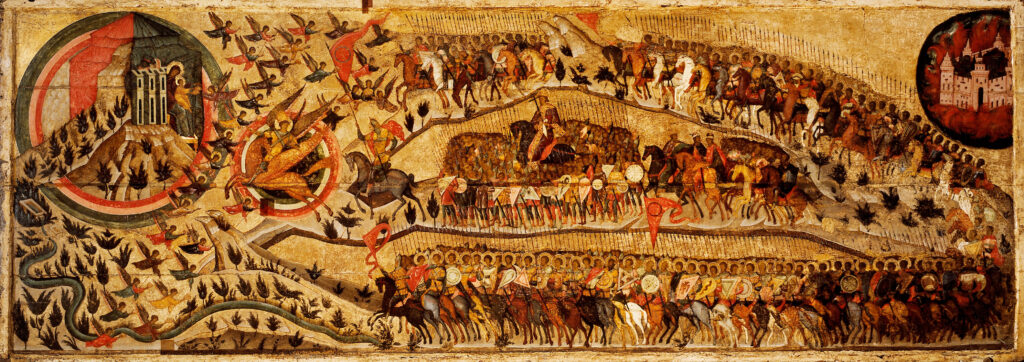This cantata may have been written for a wedding around 1728, but we don’t have firm data as to the precise circumstances of its composition. It belongs to the “chorale cantata” type, in which the text of a hymn is preserved in full (“per omnes versus”), and references to the chorale tune associated with the hymn are present throughout the movements, especially in the opening choruses and closing chorales.
In this case, the hymn is by Johann Jakob Schütz and dates from 1673. It has nine strophes, and they all end with the same verse, “Gebt unserm Gott die Ehre!” (“Give our God the glory!”). Bach retained the original melody only for the opening and closing movements (which share the same music) and the chorale (No. 4). The rest of the movements are set as recitatives and arias with material unrelated to the chorale tune.
For the opening movement (which also closes the cantata) Bach creates a lively instrumental ensemble with strings, oboes and flutes on top of a very busy continuo line, which is interspersed with the hymn verses sung by the choir mostly homophonically. The chorale tune is carried by the sopranos.
The next stanza of the hymn is set as a secco recitativo for the bass, which changes to an arioso on the last line to highlight the repeated verse.
Stanza 3 is set as a tenor aria with 2 oboes d’amore and continuo in a dance-like 6/8 meter. The 4 lines are equals and pass the motif in sixteenth notes back and forth in lively counterpoint.
Stanza 4 is a chorale harmonization of the hymn tune. The fact that the cantata has a chorale in the middle suggests that it could have been performed in two parts, even though there is no indication to that effect in the score.
The following section is set as a recitativo for the alto, which starts as an “accompagnato” and switches to arioso for the last line while dropping the string accompaniment.
Movements 6 and 7 are two arias. The first one is for the bass with violin solo – a very delicate and placid tune, almost like a lullaby in character. The violin gets sweeping lines that exploit its low register to symbolize the peace mentioned in the text, also highlighted with long notes in the vocal line. The repeated verse at the end is emphasized by a change in character and the introduction of three repeated notes, both in the voice and the violin, to the words “Gebt unserm Gott”.
The alto aria includes strings and a solo flute, which often doubles the first violin or the voice at the octave, creating a gentle and crystalline sonority that Bach employed often in his orchestration.
An energetic secco recitative for the tenor decrying the “false idols” leads to a reprise of the opening chorale with different text – the last stanza of the hymn.
It’s impressive to realize how Bach’s craft and inventiveness turned what could have been a monotonous text into a treasure chest of colors, styles, moods and musical intentions.
